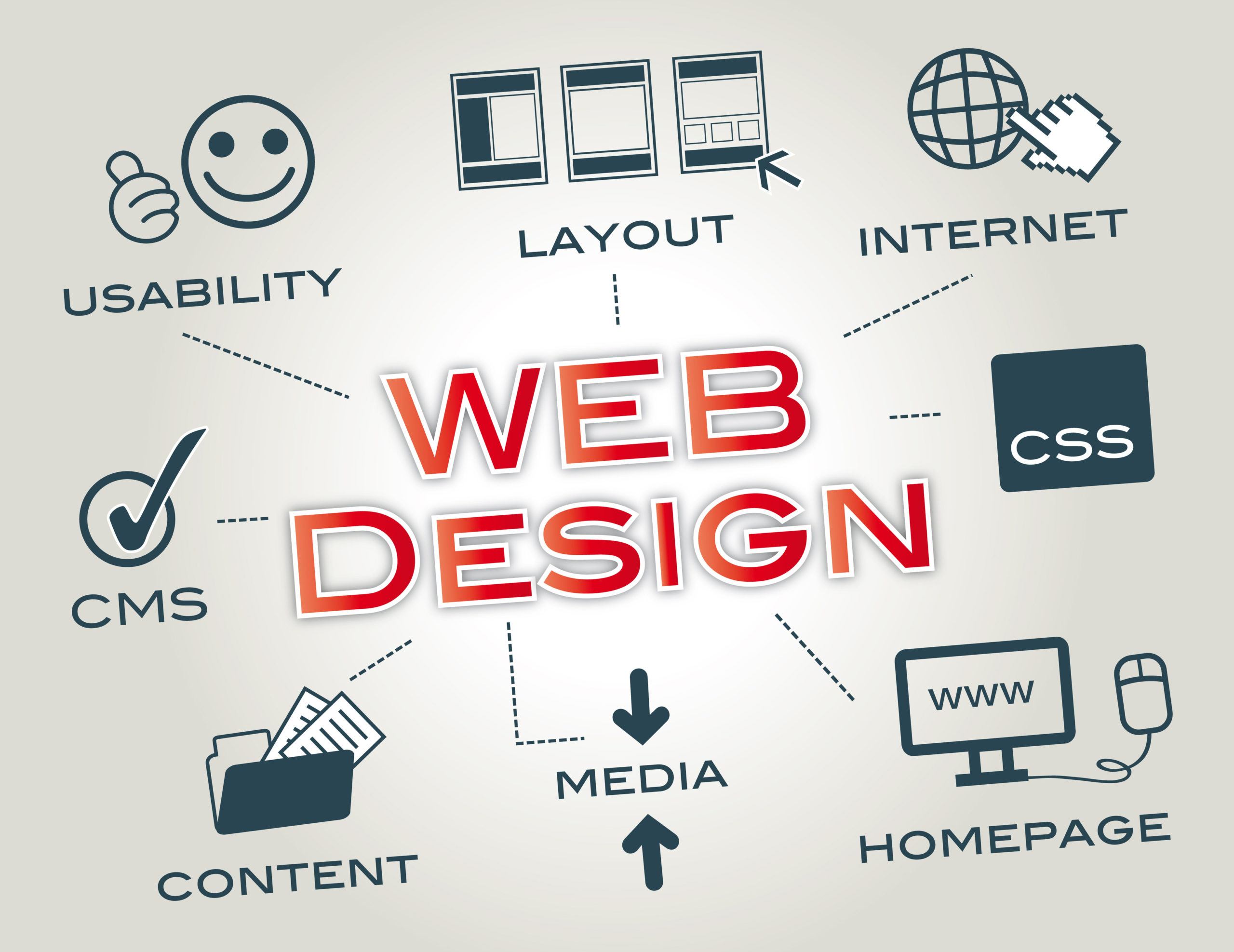How a Web Design Agency builds recognizable digital identities
Wiki Article
The Relevance of User Experience in Reliable Web Design Techniques
User experience (UX) functions as a foundation in reliable web design methods. It shapes exactly how individuals connect with a site, influencing their fulfillment and possibility of returning. A well-designed UX can boost involvement with intuitive navigating and receptive layouts. Forgeting these elements may lead to frustration and boosted bounce rates. Recognizing the complexities of UX is crucial for developers intending to produce engaging electronic experiences that reverberate with varied audiences. What factors truly drive successful user involvement?Understanding User Experience and Its Influence On Style
User experience (UX) is frequently regarded as a mere aspect of web layout, it essentially forms how individuals connect with a website. UX incorporates all facets of the user's interaction, consisting of usability, availability, and total contentment. A positive UX cultivates involvement, encouraging individuals to check out the site and return in the future. Alternatively, a negative experience can result in irritation, causing high bounce prices and lost chances for conversion.Style elements like navigation, design, and material organization play crucial roles in shaping this experience. Effective UX design prepares for user requirements and preferences, making certain that info is visually enticing and conveniently accessible. In addition, recognizing user actions via analytics can give valuable understandings, notifying design choices that enhance functionality. Ultimately, a comprehensive understanding of UX allows designers to develop web sites that not only attract individuals however likewise advertise significant interactions that line up with organization goals and user expectations.
Key Concepts of Reliable User Experience
Efficient user experience hinges on a number of key concepts that improve site functionality and involvement. User-friendly navigation layout, receptive format basics, and the importance of visual pecking order are important aspects that add to a smooth interaction in between individuals and web content. Recognizing these principles permits developers to create even more available and user-friendly digital environments.User-friendly Navigating Style
Instinctive navigating design serves as a vital portal to their general experience when customers encounter a web site. Effective navigation permits users to effortlessly find the details they look for, improving their communication with the site. Key principles consist of clear labeling, sensible organization, and consistent placement of navigating components. Tags should be simple, enabling customers to forecast the content they will certainly locate. A well-structured power structure helps users comprehend the partnership between various areas, directing them via the web site flawlessly. Additionally, responsive food selections and quickly available web links add to a fluid experience across tools. By prioritizing intuitive navigation, developers can significantly lower user disappointment and rise engagement, inevitably cultivating a positive perception of the internet site and its material.Receptive Layout Basics
A well-structured navigating system naturally results in the demand for a responsive design, which is necessary in today's diverse digital landscape. A responsive layout warranties that websites function flawlessly throughout numerous devices, consisting of tablet computers, smart devices, and desktop computers. This versatility boosts user experience by enabling content to be easily obtainable and visually meaningful, no matter screen dimension. Trick concepts of responsive style consist of fluid grids, versatile photos, and media questions, which promote excellent watching. In addition, prioritizing touch-friendly aspects enhances communication on mobile tools. By carrying out a receptive format, designers can suit users' requirements, decrease bounce prices, and rise engagement. Eventually, a well-executed receptive style fosters a favorable user experience, motivating site visitors to explore the web site even more.Visual Power Structure Significance
Aesthetic power structure plays a crucial role in directing customers with an internet site, making certain that important information captures their attention initially. By strategically using size, comparison, color, and spacing, developers can create a clear pathway for users to follow. Bigger aspects often attract the eye, showing their value, while contrasting colors can highlight contact us to activity. Additionally, regular positioning and group of associated material improve comprehension, making navigation instinctive. Reliable use visual hierarchy not only boosts functionality however additionally sustains the total aesthetic of the website, fostering a positive user experience. When customers can quickly determine one of the most essential information, they are most likely to involve with the material, bring about boosted contentment and communication with the site.The Role of Functionality in Web Design
Usability plays an essential duty in web design, particularly with navigation simplicity and adherence to accessibility requirements. Efficient navigating improves user complete satisfaction by enabling site visitors to find info rapidly and without effort. At the same time, meeting availability criteria guarantees that all customers, despite their abilities, can efficiently engage with the site.Navigating Simpleness
Simplicity in navigation stands as a foundation of effective web design, substantially affecting user experience. A structured navigating system permits users to locate information swiftly and with ease, minimizing frustration and improving fulfillment. Clear labeling and logical framework are crucial aspects, directing users easily via the site. Repetitive web links or excessively intricate menus can disorient customers, causing increased bounce prices. Furthermore, mobile responsiveness should be thought about, making certain navigating stays straightforward throughout tools. Minimizing and focusing on necessary web pages clutter even more supports user involvement. Efficient navigation find here not just fosters a favorable experience yet likewise encourages individuals to explore the site a lot more extensively, eventually leading to higher conversion rates. In this respect, navigation simplicity works as an essential consider the general effectiveness of web design approaches.Ease of access Specifications
User involvement is greatly boosted when web sites comply with access standards, making certain that all individuals, no matter of their capabilities, can browse and interact effectively. Compliance with these standards not just expands the target market however likewise improves general user fulfillment. Easily accessible design integrates features such as text alternatives for images, keyboard navigation, and enough color comparison, which facilitate usage by people with specials needs. Additionally, implementing these requirements can positively influence seo (SEO) by improving site structure and clarity. As web design develops, prioritizing access ends up being necessary in fostering a comprehensive digital atmosphere. By embracing these standards, developers contribute to a much more equitable internet, eventually driving user loyalty and interaction.Value of Responsive Design for User Involvement
As consumers increasingly accessibility web sites via a selection of gadgets, the significance of receptive design becomes paramount for involving users effectively. Responsive layout assurances that a website adapts flawlessly to various display sizes, supplying a suitable viewing experience no matter of the gadget utilized. This adaptability boosts user engagement by facilitating less complicated navigating and communication with material.When users run into a web site that is receptive, they are more probable to remain much longer, check out better, and return in the future. A properly designed responsive format decreases the frustration commonly connected with scrolling and zooming on smaller sized screens, consequently reducing bounce prices. Additionally, responsive layout can favorably affect search engine positions, as online search engine focus on mobile-friendly web sites. In today's digital landscape, where mobile use proceeds to climb, implementing receptive style is not simply advantageous, however vital for keeping user interaction and guaranteeing a positive experience throughout all tools.
Enhancing Load Times for Better User Fulfillment

To boost tons times, web developers ought to prioritize optimizing pictures, leveraging internet browser caching, and lessening HTTP demands. Additionally, using Content Distribution Networks (CDNs) can expedite material shipment by distributing it across numerous geographic locations. Simplifying code, such as compressing CSS and JavaScript documents, additionally contributes to quicker loading rates.
Inevitably, a dedication to improving load times not only boosts user fulfillment but also enhances brand name commitment and enhances the likelihood of repeat sees. A swift, smooth experience is crucial for retaining users and fostering favorable click here to read communications.
The Impact of Visual Power Structure on User Communication
Visual pecking order acts as a necessary element in leading user communication on a web site. By organizing content in a way that prioritizes details aesthetically, designers can influence how customers browse and engage with a website. This power structure is developed through various design strategies, consisting of size, comparison, spacing, and color. As an example, larger typefaces or strong shades accentuate vital elements, such as telephone calls to action or headings, while subdued shades and smaller font styles can indicate subordinate information.Reliable visual pecking order helps individuals rapidly determine what is most vital, minimizing cognitive tons and improving use. It permits user-friendly navigation, making it simpler for individuals to find what they require without disappointment. As users interact with a web site, a well-structured visual hierarchy promotes a more enjoyable experience, eventually causing greater engagement and conversion rates. Developers must prioritize these concepts to develop an user-centered and effective internet setting.
Gauging User Experience: Devices and Techniques

Often Asked Inquiries
Exactly How Can I Boost My Website's User Experience on a Budget plan?
To improve a website's user experience on a spending plan, one can maximize web page lots speed, simplify navigating, implement receptive layout, improve material quality, and gather user responses for constant improvements, making certain a satisfying site visitor experience.What Prevail User Experience Errors to Stay Clear Of in Web Design?
Typical user experience errors in web design consist of chaotic formats, poor navigating, slow loading times, absence of mobile responsiveness, ignoring ease of access, inconsistent branding, and falling short to prioritize user feedback - Web Design services. Each can substantially hinder total website effectiveness
Exactly how Typically Should I Update My Web Site for Better User Experience?
Sites ought to be updated routinely, ideally every couple of months, to maintain suitable user experience. Frequent updates assist address usability concerns, rejuvenate material, and read here adapt to altering user needs, ensuring the website stays appropriate and engaging.
Can User Experience Impact Search Engine Optimization Rankings on My Website?
User experience can considerably impact search engine optimization positions, as internet search engine prioritize web sites that offer seamless navigating, quick packing times, and interesting content. A favorable user experience can bring about lower bounce prices and greater search visibility.What Function Does Accessibility Play in User Experience Design?
Availability plays a vital function in user experience layout by ensuring that all individuals, no matter of capacities, can interact and navigate with a web site successfully. This inclusivity enhances overall fulfillment and involvement amongst varied users.User experience (UX) is typically viewed as a plain element of web design, it basically forms how individuals communicate with a web site. User involvement is significantly improved when internet sites stick to access requirements, guaranteeing that all users, no matter of their abilities, can navigate and connect successfully. Determining user experience (UX) is essential for recognizing exactly how efficiently an internet site satisfies the requirements of its customers. Furthermore, functionality testing, where real users browse the website while viewers note problems, uses direct feedback on user experience. Common user experience blunders in internet style include cluttered formats, inadequate navigating, slow loading times, absence of mobile responsiveness, neglecting availability, inconsistent branding, and failing to focus on user responses.
Report this wiki page